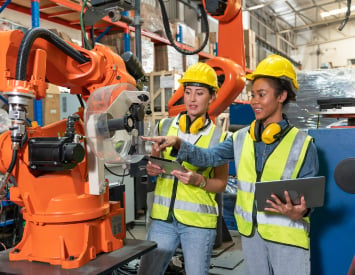New research has unveiled transformative building materials that promise to significantly reduce the construction sector’s carbon footprint. Discover how civil and construction engineers are leveraging these innovations to drive the industry toward net zero emissions.
How the Research Took Place
Recent advancements in sustainable building materials have emerged from a series of innovative research projects that are setting new standards in the construction industry.
Researchers at the American University of Ras Al Khaimah have been exploring the use of rice ash husk as a partial replacement for cement in concrete. This material, rich in silica, enhances concrete’s strength while reducing its environmental impact. As Sameer Rao, a senior author of the study, puts it, metal-organic frameworks (MOFs) used in this research are akin to “Lego blocks” for their ability to be tailored for efficient water adsorption.
In Germany, a team from the Technical University of Dresden, working with the architectural firm Henn, has introduced “carbon concrete.” This innovative material replaces traditional steel reinforcement with carbon fiber, which is not only lighter but also significantly stronger. Henn highlights that carbon fiber is a quarter of the weight of steel but boasts six times its strength, which translates to a substantial reduction in both material weight and environmental impact.
Meanwhile, researchers at Rensselaer Polytechnic Institute are pushing boundaries with natural fiber-based reinforcing bars. These bars, made from hemp and flax bound with plastic, offer a sustainable alternative to traditional steel. Nathan Ortiz, a co-author of the study, emphasizes the efficiency of these materials, noting that their extensive internal surface area provides remarkable benefits for both strength and performance.
In the UK, Cambridge Carbon Capture has developed a novel method for producing lightweight bricks by reacting magnesium oxide with atmospheric CO2. This process not only captures carbon but also creates a sustainable building material. This dual benefit addresses carbon emissions while contributing to resource conservation.

Why This Research Matters
The importance of these research breakthroughs cannot be overstated. The construction industry, with its heavy reliance on materials like cement and steel, is a major contributor to global CO2 emissions. Innovations like rice ash husk concrete and carbon concrete offer promising alternatives that significantly cut down these emissions.
These materials are not just about reducing the carbon footprint of new buildings; they represent a critical shift toward more sustainable construction practices that align with global climate goals.
Moreover, these advancements contribute to resource conservation. By repurposing waste products and reducing the demand for new raw materials, technologies like recycled bricks and biochar help mitigate the environmental damage associated with material extraction and processing. This approach not only benefits the environment but also supports the efficient use of resources, which is crucial for sustainable development.
The potential long-term impact of these innovations is equally important. By integrating these advanced materials into construction practices, the industry can pave the way for future projects that are not only environmentally friendly but also resilient and resource-efficient. This shift toward sustainability ensures that future construction projects will contribute positively to the ecological balance.
How It Will Impact Civil and Construction Engineering
Civil and construction engineers stand to gain significantly from these new technologies. For instance, the integration of carbon concrete and recycled bricks into infrastructure projects can lead to more sustainable urban environments. Using carbon concrete in high-rise buildings can reduce overall material consumption, contributing to lighter, more efficient structures.
Construction engineers will find that materials like rice ash husk concrete and natural fiber reinforcing bars enhance building performance. These innovations offer stronger, more durable structures while lowering the environmental impact, thus creating buildings that are not only eco-friendly but also resilient.
The shift toward using biochar and recycled bricks supports better resource management. By utilizing waste materials, these technologies help reduce reliance on virgin resources, leading to more efficient and cost-effective construction practices.
Environmental engineers can leverage these advancements to drive sustainable development. For example, incorporating biochar into building cladding can improve carbon storage and reduce the overall carbon footprint of buildings. This aligns with broader environmental goals and promotes sustainable building practices.
Looking to the Future
The research and advancements in sustainable building materials mark a significant step toward achieving net zero emissions in the construction sector.
As civil and construction engineers embrace and refine these innovations, their role in advancing sustainability becomes increasingly vital. These developments promise to not only reduce the carbon footprint of construction but also lay the groundwork for future innovations.
With ongoing research and development, the construction industry is poised to make substantial strides toward a more sustainable future, driven by the commitment of engineers and researchers alike.
References
From recycled bricks to buildings made of cob: How construction sector can reach net zero
The Next Hurdle In The Construction Industry’s Race To Net-Zero


